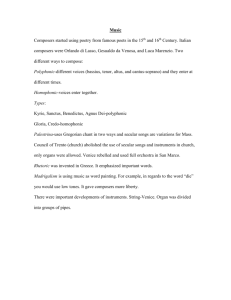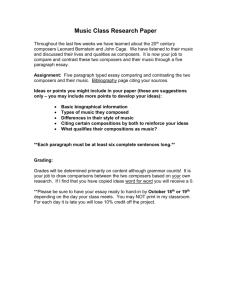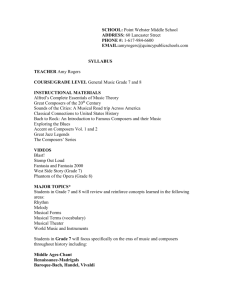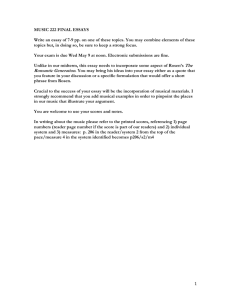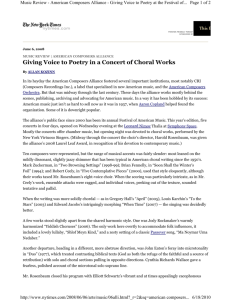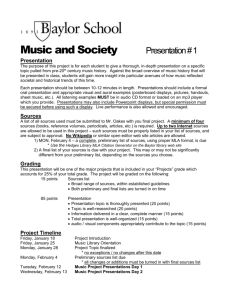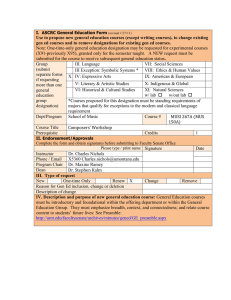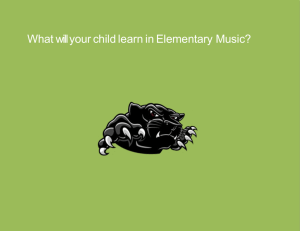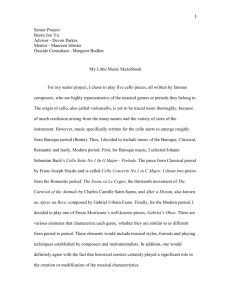Band notes - Grandview Performing Arts
advertisement
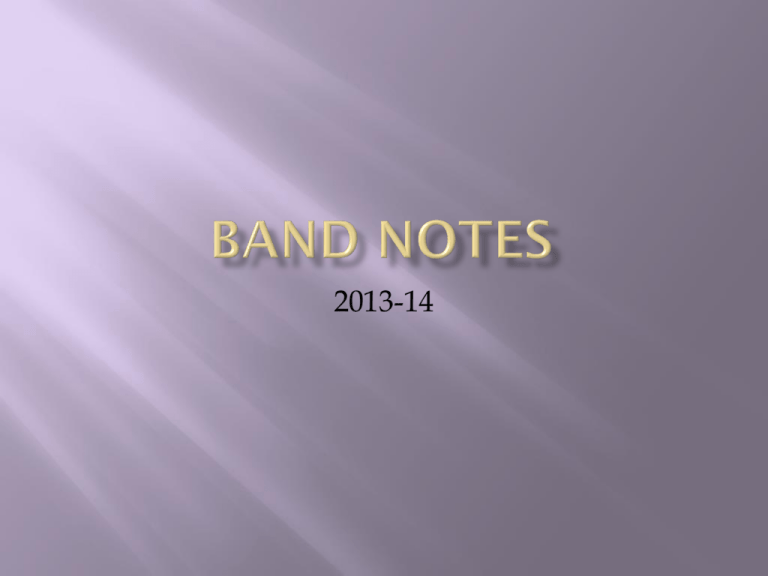
2013-14 Ancient – BC-500AD Medieval – 500-1400 Renaissance – 1400-1600 Baroque – 1600-1750 Classical – 1750-1820 Romantic – 1820-1900 Modern – 1900-present Ancient BC – 500AD Highly developed Greeks, Romans Far East, Africa, Americas, Native Australia Modes came from ancient music No official written record so little is proven about characteristics but we know it existed Composers unknown Medieval 500-1400 Most music occurred in churches, monasteries – Sacred music First written records of music and notation Gregorian chant Almost all vocal, few instruments Single lines, monophony Gneumes Texts were mostly Latin Composers – Hildegard von Bingen, Leonin, Perotin Renaissance 1400-1600 Repetition Court music Sacred and Secular music Instruments in small groups Polyphony Melody and accompaniment Composers – Palestrina, Josquin, William Byrd, Thomas Tallis Baroque 1600-1750 Highly ornamented Repetition Larger groups of instruments (still small) Oratorios Cantatas Fugues Figured Bass and improvisation Concertos for solo instruments with accompaniment Composers – J.S. Bach, Antonio Vivaldi Classical 1750-1820 More complicated harmonies More complicated forms First symphony – Haydn The beginning of orchestras as we know them today Opera Composers – Mozart, Haydn Romantic 1820-1900 Large ensembles and orchestras Symphony form perfected and elongated Dramatic music in terms of volume and style Music that tells a story Complicated harmonies, forms, use of chromaticism and dissonance Beethoven – 9 symphonies Tchaikovsky Wagner Brahms Modern 1900- present Complicated rhythms Atonal harmonies Mixed meters Folk music Nationalism Composers – Bernstein, Copland, Stravinsky, Holst, Gershwin, Debussy Notes that sound the same but are spelled differently Example – C# = Db Write down all the other enharmonics Half steps between white keys on the keyboard Between E and F Between B and C Concert Pitch or C – flute, oboe, bassoon, trombone, euphonium, tuba, percussion, piano Bb – Clarinet, Bass Clarinet, Tenor Sax, Trumpet Eb – Alto Sax, Bari Sax F – English Horn, French Horn F, C, G, D, A, E B Bb, Eb, Ab, Db, Gb, Cb, Fb Sharps – look at the last sharp (the one furthest to the right) and go up one Example - 2 sharps F and C = key of D Flats – look at the flat before the last flat Example – 3 flats Bb, Eb, and Ab = key of Eb CEG GBD DFA ACE EGB BDF FAC Major Triad – 1, 3, 5 Augmented – 1, 3, raised 5 Minor Triad - 1, lowered 3, 5 Diminished Triad – 1 , lowered 3, lowered 5 Conjunct – smooth, movement by step Disjunct – skips and leaps, not smooth Major Minor Two types Relative – share key signature Parallel – share starting and ending notes Three forms Natural – same as key signature Harmonic – raise the 7th note Melodic – raise the 6th and 7th ascending and lower the 6th and 7th descending (natural form descending) Ascending notes crescendo Descending notes decrescendo Short to long Weak to strong Long notes must have shape Melody must always be heard Background parts must have shape Rhythmic emphasis on the upbeat as opposed to the downbeat Re-statement of the main theme usually following a development section How music is organized Overture ABA – ternary AB – binary Sonata AABA
